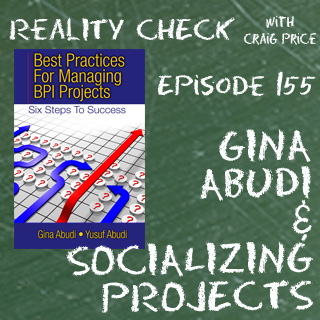
When your team is not working well together, consider holding a special team meeting to improve teamwork and get the team back on the right track. Use this special team meeting to resolve the issues that are causing the problems and assisting the team to move forward to improve how the team will work together to accomplish the goals of their initiative.
Consider these best practice steps to help in facilitating a team meeting with the goal in mind of improving teamwork:
Pre-Meeting
- Send a survey to all team members to understand their perceptions on how the team is functioning, consider questions such as:
- How well do you know the other team members?
- Does the team follow team norms and rules to work together?
- How frequently do you participate in team meetings?
- Do you feel team members are open and honest with each other?
- Do you feel team members listen to and support each other?
- How are decisions made on the team?
- Follow up the survey with small group (if a larger team) or one-on-one meetings to probe further on certain responses. Your goal is to get a fuller picture of what is working on the team and what is not working.
- Send the data you have gathered – what’s working on the team/where on the team’s strengths and what’s not working/where does the team need to improve – to all team members prior to the meeting and ask them to review prior to the scheduled meeting
- Send an agenda for the meeting with specific topics (aligned to areas that need improvement from the data you gathered) and timing for each topic. Ask for input on the agenda from those who will be participating in the meeting
The morning the meeting, set up the room so that participants can collaborate. For larger groups, use small round tables with no more than 4 – 5 per table to facilitate small group discussions; for smaller groups, use a round table so that it is easier to collaborate. Have multiple flip charts available for capturing information.
Facilitating the Meeting
- Kick off the meeting with a fun activity to get everyone comfortable and enable them to get to know each other.
- Work with the group to set ground rules for this special meeting – no cell phones, everyone participates, etc.
- Quickly review the information gathered prior to the meeting from the surveys and focus groups/one-on-one meetings and answer any questions
- Get agreement on the goal of the meeting, e.g., to improve teamwork overall so that the team members support each other toward meeting a common goal
- Help the team to work through each of the areas of improvement to be addressed – using brainstorming techniques to determine how to resolve issues (make sure everyone participates!). For example, if the team has lots of conflict among members you might ask during this part of the discussion:
- In what areas do we see the most conflict?
- What can we do, as a group, to better manage conflict when it arises so that people are comfortable working together and working through conflict? (What will be our processes for handling conflict, who is involved, what expectations do we have of each other, etc.)
In this example, it is important to highlight that conflict is a normal part of working together and is common on all teams; it is how the conflict is managed that makes the difference between a successful team and an unsuccessful one.
- Work through ideas offered in how to improve in the area being discussed, determining the best option of all ideas generated during brainstorming and develop a plan for how to move forward. For larger groups, set up smaller teams (break out groups) to focus in particular areas and share their ideas with the others.
When I have smaller break-out groups to focus on particular areas of improvement, I would use the afternoon or a second meeting day to enable those focus groups to go and do their work on how to implement the idea to improve and then bring the groups together later on to share their ideas and get agreement on moving forward.
Develop action plans that all team members will agree to on how to move forward to reach their goals.
Post-Meeting
- Send out the notes and agreed to action plans from the meeting, along a schedule of deliverables and due dates for those deliverables
- Schedule a follow up meeting to review progress on the action plans and check in
- If possible, set up a portal or other online collaboration space for the team to regularly “get together” and share information – this helps to build relationships among team members and keeps communication flowing
For teams that may have a number of issues, you may want to seek an external facilitator to help move the team forward.



Thank you for your comment Suzanne and for reading. I would imagine that the team leader also spent some time getting to know the team, understanding their strengths and weaknesses and guiding them to the point where they work well together. Good luck when you take over the role!
Best regards,
Gina
Thanks for the great team meeting format. There are many great tools in this article to help teams function more effectively. I am currently on a team that seems to have good rapport. I think it’s because our leader handles the meetings very well. I’m the next leader so I only hope I can do as well. Suzanne
Thanks for your comment Paul and for your addition to best practices. The upfront preparation work is so essential in effective facilitation of a meeting and you certainly need the follow through on the back end. For many project teams I kick off (as facilitator) – I offer conference calls for a period of time after the initial kick off meeting to ensure everyone keeps moving in the right direction and we manage issues early on.
Best,
Gina
Thank you for your comment Liz. I find practicality works wonders!
Best,
Gina
Hi Gina,
Another great post. Isn’t it strange that many people don’t recognise the need for appropriate pre-meeting preparation and post meeting wrap up. I’ve learnt through bitter experience that, despite wanting to help out, facilitating a meeting of any kind with next to no notice can be truly problematic. I guess the only thing I would add would be to make sure you (the facilitator) is always open to pick up on under-lying issues to feed back to the client. By all means deal with them within the meeting if you can but never lose sight of the original objectives.
Paul
Gina, this is a great model for enhancing communication and alignment, leading to much greater team effectiveness. This is spot on with the approach I take to team development. Much more useful than taking the group zip lining or white water rafting!